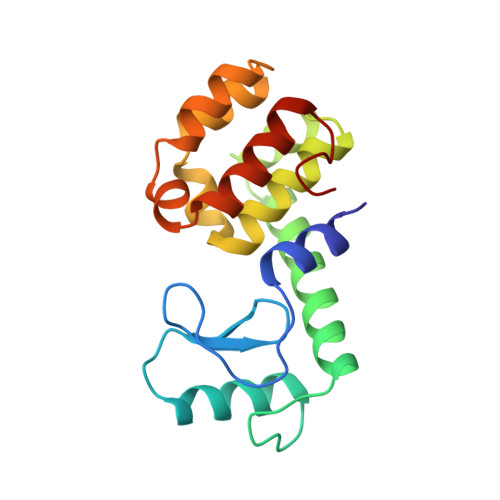Generation of ligand binding sites in T4 lysozyme by deficiency-creating substitutions.
Baldwin, E., Baase, W.A., Zhang, X., Feher, V., Matthews, B.W.(1998) J Mol Biol 277: 467-485
- PubMed: 9514755
- DOI: https://doi.org/10.1006/jmbi.1997.1606
- Primary Citation of Related Structures:
220L, 222L, 223L, 225L, 226L, 227L, 228L, 229L, 252L - PubMed Abstract:
Several variants of T4 lysozyme have been identified that sequester small organic ligands in cavities or clefts. To evaluate potential binding sites for non-polar molecules, we screened a number of hydrophobic large-to-small mutants for stabilization in the presence of benzene. In addition to Leu99-->Ala, binding was indicated for at least five other mutants. Variants Met102-->Ala and Leu133-->Gly, and a crevice mutant, Phe104-->Ala, were further characterized using X-ray crystallography and thermal denaturation. As predicted from the shape of the cavity in the benzene complex, mutant Leu133-->Gly also bound p-xylene. We attempted to enlarge the cavity of the Met102-->Ala mutant into a deep crevice through an additional substitution, but the double mutant failed to bind ligands because an adjacent helix rearranged into a non-helical structure, apparently due to the loss of packing interactions. In general, the protein structure contracted slightly to reduce the volume of the void created by truncating substitutions and expanded upon binding the non-polar ligand, with shifts similar to those resulting from the mutations.A polar molecule binding site was also created by truncating Arg95 to alanine. This creates a highly complementary buried polar environment that can be utilized as a specific "receptor" for a guanidinium ion. Our results suggest that creating a deficiency through truncating mutations of buried residues generates "binding potential" for ligands with characteristics similar to the deleted side-chain. Analysis of complex and apo crystal structures of binding and non-binding mutants suggests that ligand size and shape as well as protein flexibility and complementarity are all determinants of binding. Binding at non-polar sites is governed by hydrophobicity and steric interactions and is relatively permissive. Binding at a polar site is more restrictive and requires extensive complementarity between the ligand and the site.
Organizational Affiliation:
Howard Hughes Medical Institute and Department of Physics, University of Oregon, Eugene, OR 97403, USA.

















